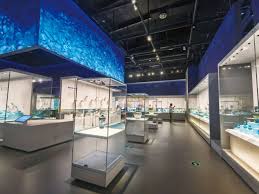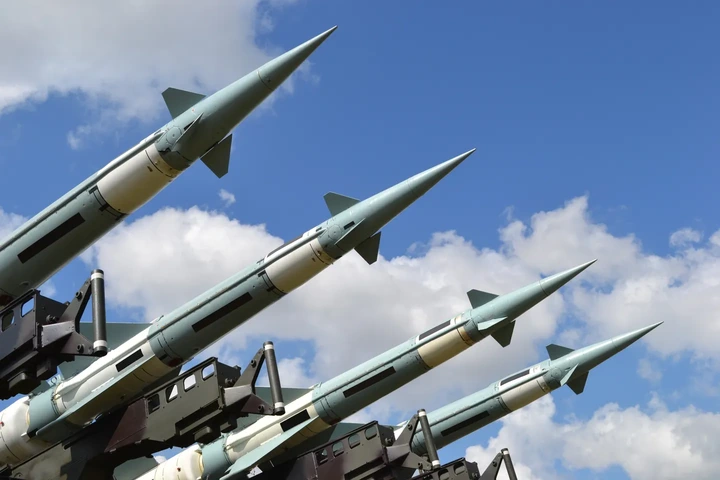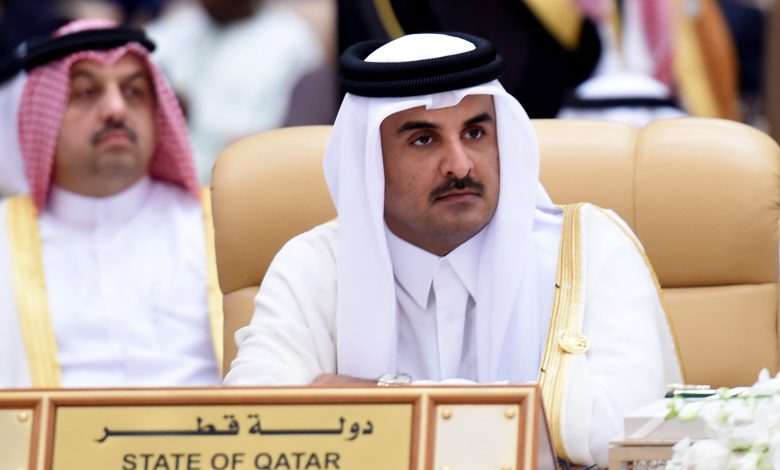Foreign
China’s underwater archaeology breaks new ground in deep sea

By Sun Haitian, People’s Daily
During the summer vacation, the China (Hainan) Museum of the South China Sea in Qionghai, south China’s Hainan province, welcomed record crowds, with daily visitor numbers nearly 50 percent higher than usual.
Since September last year, the museum has hosted a special exhibition titled Deep Blue Marvels, showcasing selected artifacts recovered from the No. 1 and No. 2 shipwrecks discovered on the northwestern slope of the South China Sea. The exhibition hall has since become the most popular attraction at the museum.
Inside the gallery, a large gilt-decorated Fahua jar, adorned with peacock-and-peony motifs in openwork designs, stands in quiet magnificence. Its brilliant glaze, intricate latticework, and exquisite gilding capture the eye. Yet as recently as last year, this masterpiece still lay undisturbed on the seabed, some 1,500 meters below the surface, alongside more than 100,000 pieces of porcelain and ebony logs.
“The first time we saw the No. 1 and No. 2 shipwreck sites at the northwest continental slope of the South China Sea on the submersible’s monitor, everyone was stunned. It was like discovering a ‘treasure chest’ sealed by time, preserved in extraordinary integrity,” said Xin Lixue, director of the China (Hainan) Museum of the South China Sea.
This archaeological discovery, which began in 2022, represents a historic breakthrough in China’s underwater archaeology, from the shallow seas into the deep sea, Xin added.
Breaking through core technologies to explore the deep
The breakthrough came during the 500th dive of China’s Deep Sea Warrior submersible on October 23, 2022. As it operated 150 km southeast of Sanya, researchers suddenly observed a seabed scattered with thousands of ceramic jars at 1,500 meters depth – the world’s first identified Ming Dynasty (1368-1644) shipwrecks in such extreme conditions.
But what does 1,500 meters mean? It is a realm of perpetual darkness, a “no-man’s zone” under immense pressure far beyond what any human diver could withstand. “Before 2018, China’s underwater archaeology was largely confined to shallow waters no deeper than 40 meters,” Xin explained. “Deep-sea archaeology is fundamentally different. Without advanced technology, the deep sea remained a blind spot for us.”
The extreme environment posed unprecedented challenges. “This discovery was exceptionally rare. At such depths, there was no precedent for us to follow,” said Song Jianzhong, head of the archaeological survey project of the shipwreck sites. Meeting this challenge was made possible by cutting-edge technologies that had been in the making for more than a decade.
In 2009, China launched the development of its second manned deep-sea submersible, Shenhai Yongshi. After eight years of intensive research and trials, it was delivered in October 2017 to the Institute of Deep-Sea Science and Engineering under the Chinese Academy of Sciences.
With more than 95 percent of its components domestically produced, the submersible overcame critical hurdles in titanium alloy pressure sphere, deep-sea buoyancy materials, and low-noise thrusters. Capable of operating at depths of up to 4,500 meters, it gave Chinese archaeologists for the first time the ability to explore the ocean world 1,000 meters below the surface.
Sixty-three dives to recover centuries-old relics
“October 1, 2023, the second phase of archaeological investigation at the northwest continental slope shipwrecks of the South China Sea. Average wind speed: about 13 knots. Dive depth: over 1,500 meters.”
So reads the mission log of Zhang Ninghao, dive scientist and deputy leader of the archaeological survey project.
After detaching from its mothership Tansuo-2, Shenhai Yongshi began its descent at a steady 35 meters per minute. As daylight faded, darkness enveloped the vessel, and the cabin temperature gradually dropped. After more than 40 minutes, the submersible touched down on the seabed. Its lights revealed the No. 2 shipwreck site, about 21 meters long and 8 meters wide, with rows of ebony logs neatly arranged from north to south.
The No. 1 shipwreck carried porcelain from Jingdezhen in east China’s Jiangxi province, destined for overseas markets, while the No. 2 was laden with ebony logs being brought back to China. “One outbound, one inbound, together they provide tangible evidence of the vibrant two-way trade along the ancient Maritime Silk Road, filling in a missing link in the historical chain of the South China Sea routes,” Song explained.
Guided by the pilot, the submersible carefully maneuvered over the relics. Preselected artifacts were retrieved using its robotic arms. One manipulator, padded with soft material, gently grasped centuries-old relics. Though it resembled a “claw machine,” the operation was highly sophisticated: high-definition cameras recorded every move; high-precision positioning, high-resolution imagery, 3D scanning, and geophysical survey data were integrated to create a detailed archaeological map of the shipwreck sites.
From 2023 to 2024, across three phases of investigation totaling 70 working days at sea, the team carried out 63 dives. From the depths, they retrieved 928 sets of artifacts, a fraction of the immense trove that still lies undisturbed on the seabed, silently bearing witness to the maritime exchanges of centuries past.
Foreign
Trump at UN: Iran ‘Can Never Be Allowed’ to Obtain Nuclear Weapons

By: Fabian Apechihin
US President Donald Trump on Tuesday told the United Nations General Assembly that Iran must never be permitted to acquire nuclear weapons, branding Tehran “the world’s number one sponsor of terror.”
Trump said Iran’s nuclear enrichment capabilities were “totally obliterated” during June’s 12-day conflict, crediting a US-led strike codenamed Operation Midnight Hammer.


“Seven American B-2 bombers dropped fourteen 30,000-pound bombs on Iran’s key nuclear facility, completely destroying it,” Trump declared. “No other country could have done what we did. We have the greatest weapons on Earth. We hate to use them, but we did what the world has wanted for 22 years.”
The president said that, shortly after taking office, he had offered Iran full cooperation in exchange for halting its nuclear program, but Tehran rejected the overture. Instead, he accused Iran of escalating threats to its neighbors and to US interests.
According to Trump, the military campaign forced a breakthrough, paving the way for an end to the 12-day war between Israel and Iran. He cast the truce as both a victory for American power and a step toward regional stability.
While hailing the strike as a historic achievement, Trump’s speech underscored the continuing hostility between Washington and Tehran, despite what he described as a short-term ceasefire.
Do you want me to sharpen this into a hard-news brief (just the essentials in 4–5 sentences), or keep the expanded version with military details and quotes?
Foreign
Trump to Criticize ‘Globalist’ Bodies, Palestinian Recognitions in UN Speech

By: Fabian Apechihin
US President Donald Trump will take aim at“globalist institutions” and Western governments’ recognition of a Palestinian state in his address to the United Nations General Assembly on Tuesday, the White House said on Monday.
Press Secretary Karoline Leavitt said Trump’s first UN speech of his second term will highlight “the renewal of American strength around the world” while accusing multilateral bodies of undermining global order.
“The president will also touch upon how globalist institutions have significantly decayed the world order, and he will articulate his straightforward and constructive vision for the world,” Leavitt said.
Trump, a longtime critic of the UN, has previously slashed US funding to its agencies and pulled Washington out of several multilateral agreements under his “America First” agenda.
On the sidelines of the assembly, Trump will hold a multilateral meeting with leaders of key Muslim nations — including Qatar, Saudi Arabia, Indonesia, Turkey, Pakistan, Egypt, the United Arab Emirates, and Jordan — Leavitt disclosed.
The speech comes amid tensions over recent decisions by Britain, Canada, and Australia to recognize a Palestinian state, with France expected to follow. Trump has condemned the moves, arguing they amount to “a reward to Hamas.”
Israeli Prime Minister Benjamin Netanyahu, due to speak at the UN on Friday, has vowed to expand settlements in the occupied West Bank in response to the recognitions.
Trump will also meet Ukrainian President Volodymyr Zelensky to discuss Kyiv’s push for Western-backed security guarantees, and separately hold talks with Argentina’s President Javier Milei after Washington signaled possible economic support for Buenos Aires.
Would you like me to make the headline sharper and more dramatic (e.g. “Trump to Blast UN, Western Allies Over Palestine at General Assembly”) or keep it formal and neutral like above?
Foreign
The Qatari Ministry of Interior has dismissed claims that it introduced new visa restrictions targeting Nigerian passport holders.

By: Fabian Apechihin
According to BBC Pidgin, an official of the ministry said Nigerians remain eligible to apply for visas, with no changes to existing procedures.
https://iframe.fresh8.co/6703bccdc75e64d97e37c6e3/adtag?ref=https%3A%2F%2Fpoliticsnigeria.com%2Fqatar-denies-introducing-new-visa-restrictions-for-nigerians%2F&ord=%%CACHEBUSTER%%&clickUrl=%%CLICK_URL_ESC%%&
The viral claims had alleged that Qatari authorities banned male applicants from travelling to the Gulf state unless accompanied by family members.
The reports also suggested that only women or families could apply for visas, with requirements including a five-star hotel booking and proof of a return flight before consideration.
According to the claims, the purported measures were linked to frequent cases of overstays by Nigerian travellers.
However, Hayya, Qatar’s official digital platform for e-visa services, confirmed that the application process remains unchanged.
“There has been no suspension or changes to the current procedures. If any updates are to be made, they will be announced on our official platforms,” Hayya said.
Qatar has witnessed a steady rise in Nigerian visitors in recent years, particularly as an alternative travel hub during the diplomatic row between Nigeria and the United Arab Emirates (2021–2024), which led to visa restrictions and suspension of direct flights.
-

 Uncategorized5 years ago
Uncategorized5 years agoFG, states urged to harness flooding for ranching, others with technology – Agbaje
-

 Headlines10 years ago
Headlines10 years agoBreaking: EFCC seals Borno House of Assembly, as Hon members take to their heels
-

 News11 years ago
News11 years agoNigeria Security Operatives Stage Manhunt For Homosexual Perpetrator
-

 News9 years ago
News9 years agoHow 21-year-old Girl fled community over accusation of lesbianism
-

 News10 years ago
News10 years agoYobe Gov Moves Against Deputy
-

 Opinion6 years ago
Opinion6 years ago7 signs she has friend zoned you
-
Technology4 years ago
Online job placement company headhunts women
-

 Headlines9 years ago
Headlines9 years agoBorno Dep Gov Abducts Another Church Leader





